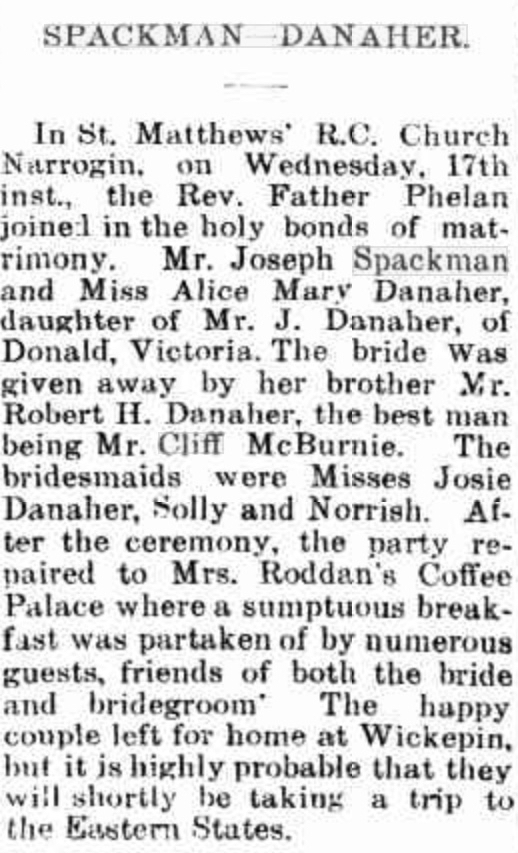The Soldier's Details

- Surname:
- Spackman
- First Name:
- Clifford Joseph
- Nick Name:
- Cliff
- Rank:
- Corporal
- Regimental #:
- WX7715
- Company:
- ‘D’ Company, No 15 Platoon
- Enlisted:
- 10.08.1940
- Discharged:
- 13.02.1946
- DOB:
- 27.02.1917
- Place of Birth:
- Pingelly, Western Australia
- Father's Name:
- Joseph Spackman
- Mothers's Name:
- Alice Mary Spackman (nee Danaher)
- Religion:
- Roman Catholic
- Pre-war Occupation:
- Dairyhand
- Singapore:
- Selarang Camp Changi, Johore Bahru,Adam Park, Selarang Barracks Changi.
- Force:
- ‘D’ Force Thailand, V Battalion
- Camps Thailand:
- Kinsaiyok, Brankassio, Kuii, HIndaine, Nacompaton, Ubon, Bangkok
- POW#:
- 3/6557
- Return Details 1945:
- Thailand-Singapore by aircraft, Singapore-Fremantle, HMT Highland Brigade.
General Description
Spackman enlisted AIF 10 Aug 1940 later joining 2/4th MGB’s ‘D’ Company No. 15 Platoon with Commanding Officer Lt. Meiklejohn.
Wounded in action 0300 hours on 921942. Admitted to 2/13th Australian General Hospital on 10/2/1942 with shrapnel wounds to left thigh and right leg. Discharged to unit on 22/2/1942. Admitted to A.G.H. Roberts Barracks Changi on 24/4/1942 with an infected shell wound to right leg. Transferred to No. 2 Convalescent Depot on 25/6/1942 and discharged to unit on 27/9/1942.
Please read further about ‘D’ Company No. 15 Platoon
Cliff Spackman was selected to work work on Burma-Thai Railway with D Force V Battalion. Please read further about V Battalion.
This battalion was to lose 50% of their men to railway work and tropical illnesses. Cliff was evacuated to Nacompaton from the railway.
At the end of the war he was recovered from Bangkok.
Cliff’s parents Joseph Spackman married in Narrogin in 1909 Alice Mary Banaher from Victoria. The couple had 3 daughters and 2 sons including Cliff. The young family then lived in the Wickipen area until he completed school. His name is included in the local newspaper as being a skilled footballer and cricketer. He was working in the Coolgardie area during 1930s as confirmed by newspaper item below. Later Cliff was residing at Karridale.
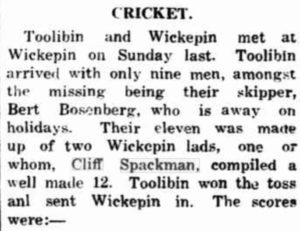
Above 1931 Wickepin Argus


above: 1931
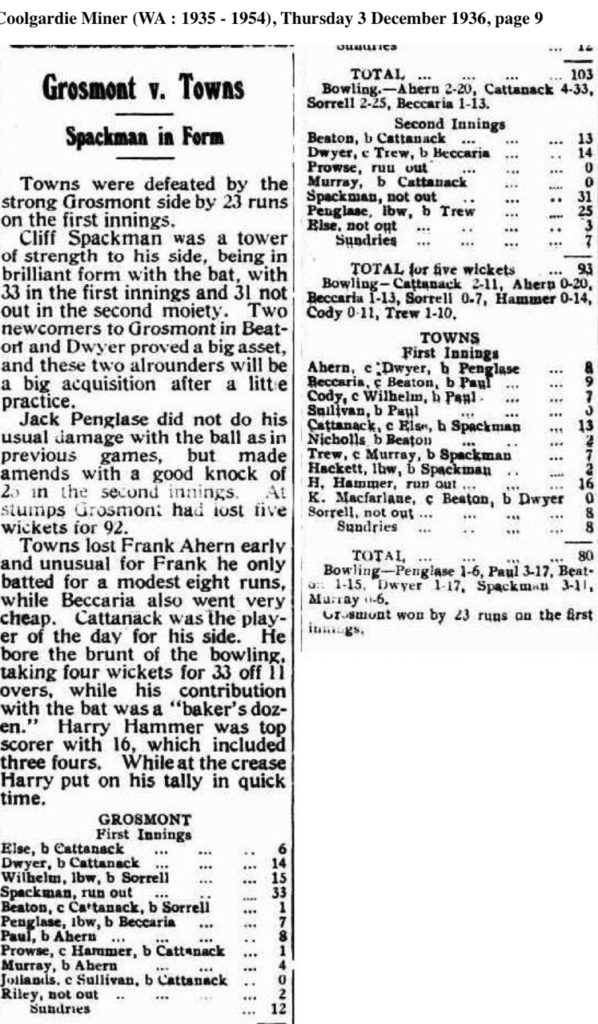
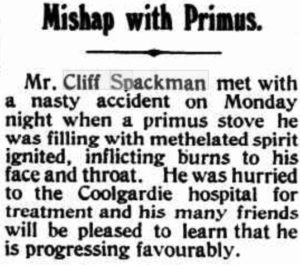
Above: From Coolgardie newspaper 1936.
Joseph Spackman died in 1944 not knowing his son Cliff would return home. His mother died in 1977.

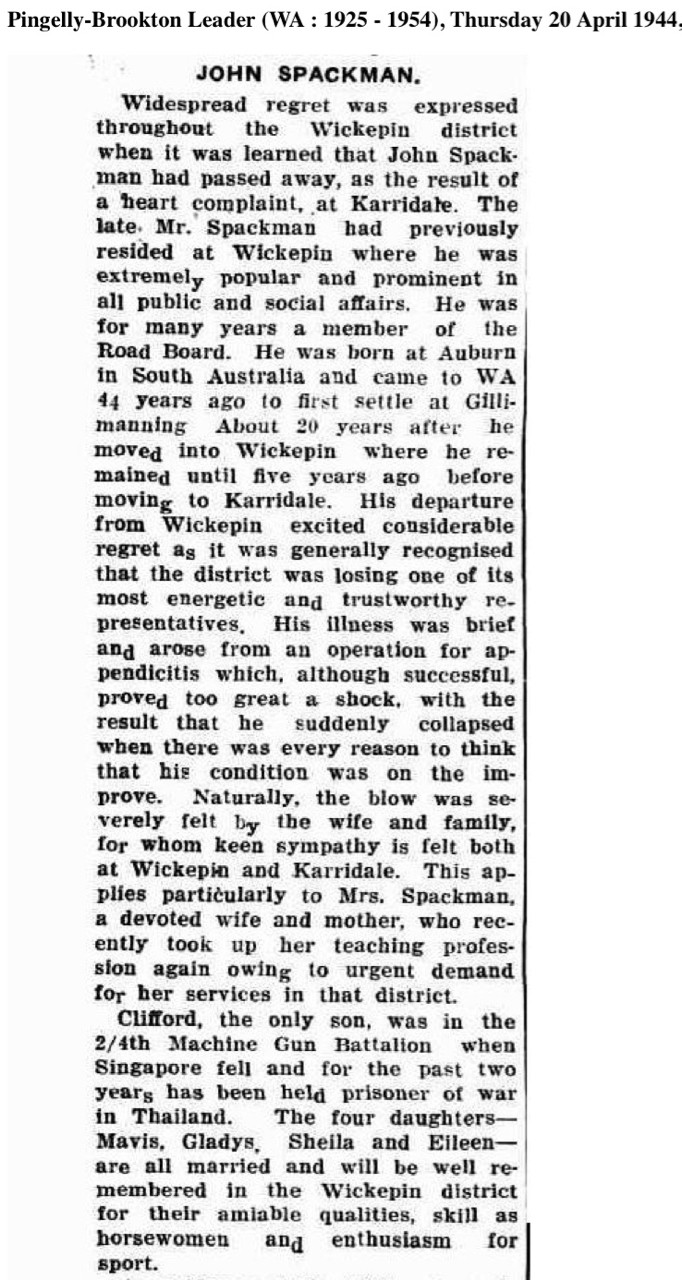
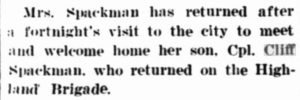
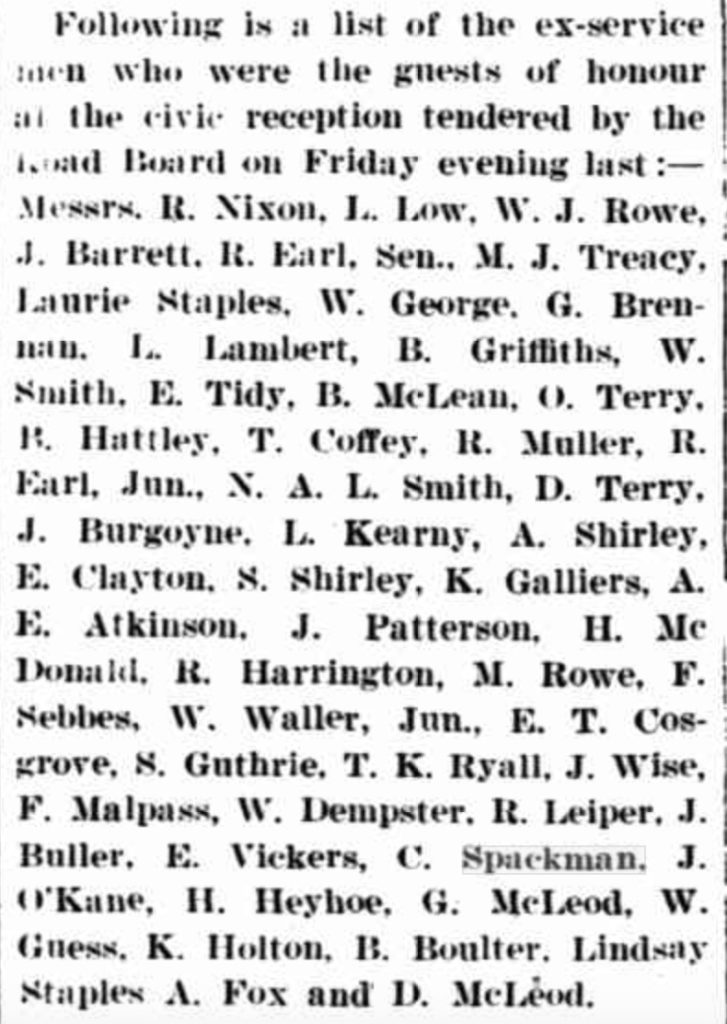
Above two items were included in the West Australian Newspaper 8 November 1945.

The above notice was placed in the newspaper for Frank Clark of Karridale.
Cliff was a talented sportsman, he was noted often for playing cricket whilst living around Wickepin and then football in the Margaret River/Karridale area. He continued his interest playing football after the war.
Cliff was included in the Changi Football team, ‘The Rest’ under the captaincy of Lou Daley. Other team team members included Ron Badock and Joe Pearce. Please read further
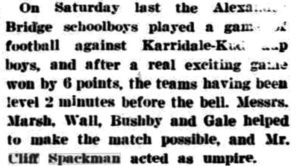
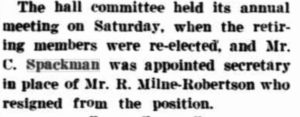
The above were printed 1946 Karidale News.
In About 1950 he married Vera Zani and the couple lived in Augusta. With the successful relocating of the Jewel Caves Cliff became a guide for the remainder of his working years, during which his son Ronald Terrance Spackman also became a cave guide.
Lester Zani, nephew of Clifford, knew him as a discoverer of the Jewell Cave, a cave guide, a barber in his own shop in Augusta, farmer and sometime tour boat operator in Augusta.
Clifford passed away 26th March 1984 and is buried in the Margaret River Cemetery.

Cliff was one of three local men instrumental in re-discovering the Jewel Caves at Busselton. They first gained notice in the early 1900’s but had never been explored.
‘Located 10 minutes north of Augusta, Jewel Cave is the largest show cave in Western Australia and also the most recently developed. It is named after the Jewel Casket, a small chamber in the lower sections of the cave. The cave was opened to the public on the 26th December 1959.
Although the existence of a small hole “Wind Hole” was known of in the early 1900’s, it was not rediscovered until 1957 when Cliff Spackman and others came upon a small hole in the ground which had a strong draft of air blasting out of it. Cliff was lowered into the cave during January 1957. Descending 12 metres through a solution pipe into a large chamber he reached a soil cone another 8 metres below the ceiling. In February 1958 Cliff Spackman, Lloyd Robinson and Lex Bastian continued the exploration, discovering more than 2kms of cave passage. The cave has a depth of 42 metres, with the floor being approximately 24 metres above sea level.
Jewel Cave is located in a limestone area approximately 90 kilometres long and 3 kilometres wide known as the Leeuwin-Naturaliste Ridge. The limestone (Aeolian calcarenite), which forms the Leeuwin- Naturaliste Ridge was formed from coastal sand dunes when westerly winds along our coastline blew beach sand, sea-shells and corals into huge sand dunes during the last million years. The sand has been cemented together to form limestone by the action of rainwater. A speleothem, or cave decoration, from Jewel Cave was dated at 466,000 years old. The uranium-thorium dating establishes a minimum age for speleothem development within the cave – hence the deposition of the limestone must predate this, presumably by a considerable amount. However a sample of limestone was taken from the basal marine unit in Jewel Cave and yielded an age of 780,000 years through thermo-luminescence dating. This data suggests that the limestone may be older than Middle Pleistocene (approximately 1 million years ago).’
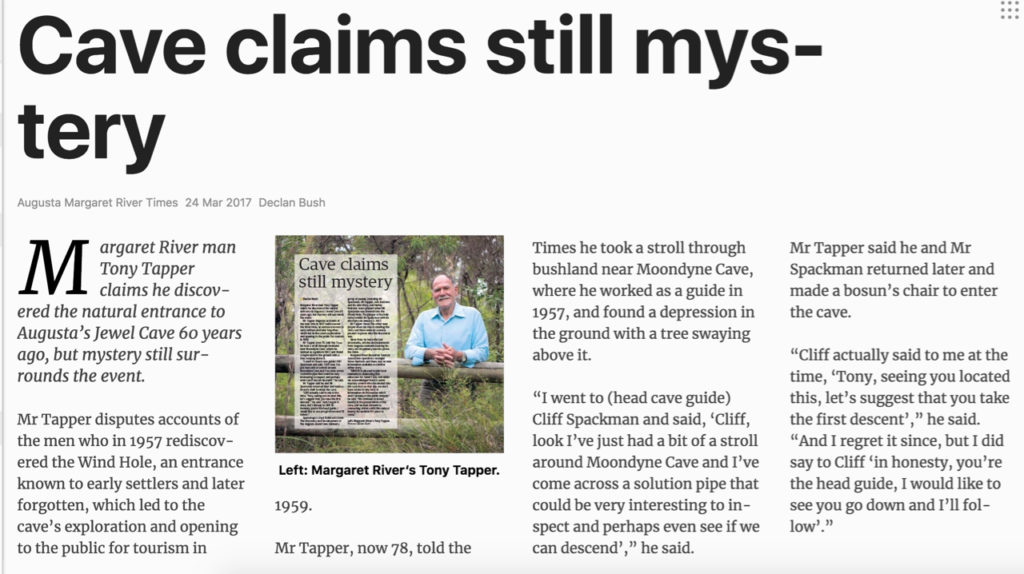
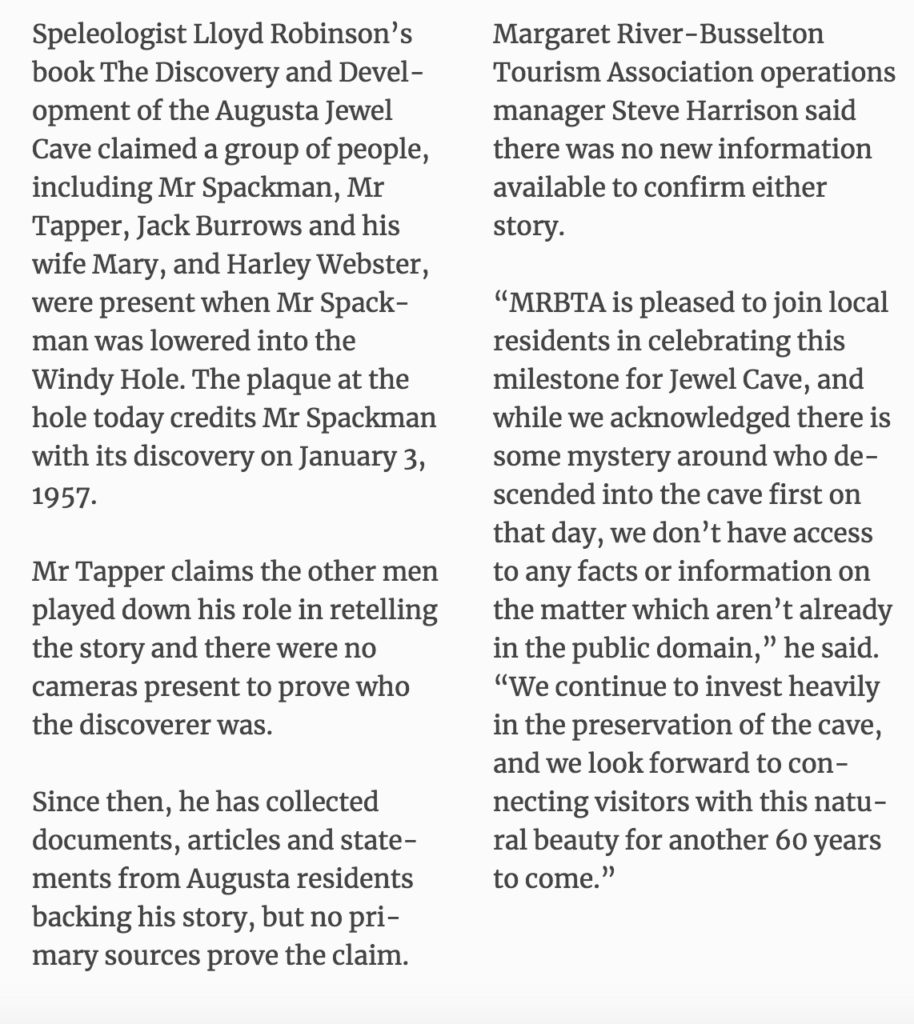
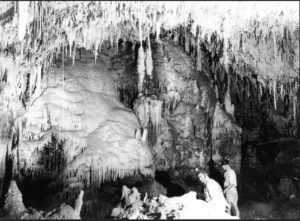
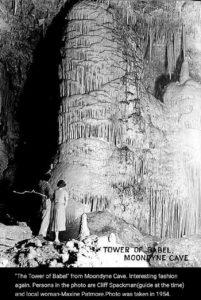
Camp Locations:
- Johore Bahru, - Malaysia
- Selarang Barracks Changi - Singapore
- Selarang Camp Changi - Singapore
- Brankassi, Prang Kasi, 208k - Thailand
- Hindaine, Kui Mang 200k - Thailand
- Kinsaiyok Main, 170.2k - Thailand
- Kuii, Kui Yae, 185.6k - Thailand
- Nacompaton, Nakom Pathom Hospital - Thailand
- Ubon - Thailand ***
- Bangkok - Thailand

